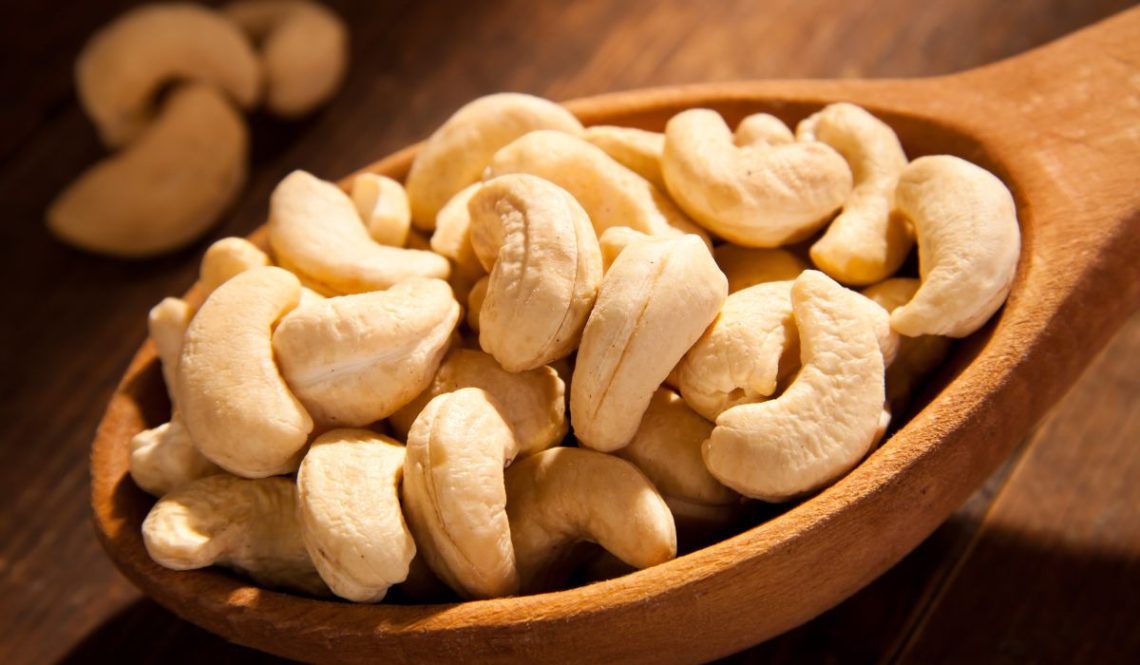
How To Start Cashew Farming Business | SkillsAndTech
Do you want to start a cashew cultivation or plantation project? If so, read this article on how to start cashew farming with a business plan, growing method, plant protection, etc.
Basically, cashew is an export-oriented crop. You can grow cashew for nuts. It is highly delicious and nutritious. Therefore, it is popular as a ‘wonder nut’. The scientific name of cashew is Anacardium occidentale L. And it belongs to the Anacardium family.
See Also: How To Start Surgical Bandage Making Business
Cashew farming is a long-term project. It is highly profitable provided you grow it properly with the right marketing plan. In addition to that, the cashew plantation project demands an adequate amount of land for cultivation. So, if you have agricultural land and you want to go for a farming business, then cashew farming is just perfect for you.
Table of Contents
Economic Importance of Cashew Farming
First of all, the cashew nut is a popular type of snack nut. Finely chopped kernels are used in the production of sweets, ice cream, cake, and chocolates, both at home and industrially, and as a paste to spread on bread. Additionally, it is an essential ingredient in various kinds of dishes. The kernel oil of pale yellow color is used in pharmaceutical and cosmetic industries.
See Also: How To Start Cocoa Plantation Farming
Cashew nut shell liquid (CNSL) extracted from its shell has many industrial applications. It is an important raw material in making paints, resins, flame retardants, etc.
The testa covering the kernel, rich in tannin is used in the leather industry. The cashew apple, the pseudo-fruit, is rich in vitamin C. It is used to cure scurvy, diarrhea, uterine complaints, and dropsy.
See Also: How To Start Tannery Business
Primarily, cashew farming is the right option for soil conservation, afforestation, and wasteland development. Cashew is grown in nearly 25 countries of the world. Some of the major cashew-producing countries are India, Brazil, Vietnam, Tanzania, Mozambique, and Indonesia. India holds the first position in growing cashew worldwide.
Learn the Health Benefits of Cashew
You can compare its nutritional composition with almonds, hazelnut, walnut, etc. Additionally, it is a zero-cholesterol nut with high unsaturated fatty acids, proteins, and carbohydrates. Also, it comes with the right combination of amino acids, vitamins, and minerals.
See Also: How To Create Partnership Agreement In India
The copper and iron in cashews work together to help the body form and utilize red blood cells. This, in turn, keeps blood vessels, nerves, the immune system, and bones healthy and functioning properly. Finally, the consumption of cashews has been linked to cancer prevention, heart health, and weight maintenance.
Suitable Agroclimatic Condition for Cashew Farming
Generally, cashew prefers warm humid tropical conditions. You can grow cashew up to 1,000 m above mean sea level. The most important cashew-growing tracts are found between 150 South and 150 North latitudes.
See Also: How To Start Designer Lace Making Business
The ideal temperature range is 15 to 35° C, though it can tolerate a temperature of 50 – 45° C. However, the lower temperature at high altitudes affects the development of trees and flowering.
A distinct dry period of 4-6 months with an annual rainfall of 1,000 – 2,000 mm is ideal for its commercial cultivation. Rain during flowering and harvesting is not desirable and causes tea mosquito and Colletotrichum infection.
Suitable Soil for Cashew Farming
Cashew grows in almost all types of soils. It performs well in well-drained, red sandy loams and lights coastal sand without a hardpan and with a water level between 5 and 10 m depth.
See Also: How To Start Cricket Bat Making Business
The ideal pH is from 5.6 – to 7.0. Soil with a pH of more than 8.0 is not suitable for its cultivation since it is sensitive to excessive salinity. Cashew is sensitive to waterlogging and tolerant to moisture stress to a greater extent. Areas prone to waterlogging may be avoided for their commercial plantations.
Best Varieties for Cashew Farming
Cashew is a cross-pollinated crop. Additionally, it is highly heterozygous, and considerable segregation has resulted in considerable variation in its seedling population. An ideal cashew plant must have a dwarf and compact canopy with an intensive branching habit, short flowering, and fruiting phases.
See Also: How To Start A Gift Wrapping Business
Generally, Hybrids performed better than the selections. Also, you can utilize the hybrid vigor commercially in cashew through softwood grafting.
Nowadays, the dwarf genotype with compact canopy and high-yield potential is gaining acceptance in cashew cultivation realizing its utility in high-density planting.
See Also: How To Start A Watermelon Cultivation Business
Learn the Steps of Cashew Plantation
Propagation
In cashew, two different types of propagations are possible – seed and vegetative. Different types of vegetative propagations are air-layering, veneer grafting, epicotyl grafting, softwood grafting, and in situ grafting. However, softwood grafting has become the most successful and widely-adopted method.
For softwood grafting, you can raise healthy seedlings (2 months old) having a single main stem in polybags. Collect scion from elite mother plants.
See Also: How To Start Protein Shake Making Business
The selected scion should be 3-5 months old from the current season’s growth, and 10-12 cm long. Ensure that it is pencil-thick with a brown color having dormant and plumpy terminal bud and top leaves of dark green color.
Procure the scions by clipping three-fourths of the leaf blades 7-10 days before grafting. Decapitate the rootstock 15 cm above the ground level retaining 2 pairs of bottom leaves. Additionally, you can create a cleft of 4-5 cm deep on the cut end. Insert the wedge of the scion into the cleft of the stock.
Finally, secure the graft joint with polythene tape. The successful grafts show signs of growth 3-4 weeks after grafting. They become ready for planting 5-6 months after grafting. The ideal season is from March to September.
See Also: How To Start And Grow Cabbage Farming Business
Top Working
Basically, top-working is a technique to rejuvenate old and unproductive cashew trees. Successfully, you can rejuvenate the trees that are 5-15 years old.
See Also: How To Start Canned Rasgulla Making Business
However, trees above 25 years show reduced sprouting and stunted growth. Beheading the trees from May to September is best for the vigor of the sprouts and the availability of suitable scion for grafting. Beheading at 0.5 m height provides a better canopy also.
Planting
Generally, the softwood grafts of high-yielding varieties are the best planting materials. However, you can also use seedlings for planting. Pit size influences the growth of plants.
See Also: How To Start Your Own Smoothie Business
The pits of 90 cm x 90 cm x 90 cm size are ideal. The spacing varies depending on soil type agro-climatic conditions and management methods.
Manuring & Fertilization
Due to the extensive root system, cashew draws nutrients from large volumes of soil. Additionally, it performs well on poor soils where other crops fail.
See Also: How To Start A Hair Braiding Business
However, it shows a good response to fertilizer application. The general recommendation of NPK is 750 g N, 325 g P2O5, and 750 g K2O/adult tree. However, you may increase the dose by 33% in areas where soil fertility is low.
Irrigation
Drip irrigation is the most common method. Also, you can apply the flow tech irrigation. Actually, it is an improved method over drip irrigation. Application of water (200 liters/tree) once in a fortnight is recommended for increasing cashew yield. While irrigating cashew plants, you must take care to avoid continuous irrigation. Otherwise, the trees may remain in the vegetative phase for a longer period.
Pruning
See Also: How To Start A Hair Braiding Business
Basically, pruning is an important practice in cashew. It facilitates proper light penetration and helps in the production of vigorous productive laterals for enhancing nut production. The right time for pruning is August month. A pruning schedule of removing 25% of the fifth order of branches at 3 years interval increases yield considerably.
Harvesting & Post Harvest Management
See Also: How To Start Rubber Gasket Making Business
Flowering in cashew starts from the third year onwards and reaches full production potential by the tenth year. Generally, it gives economic yield for a further 20 years. After the fruit set, the nut develops quickly and reaches full size 3-4 weeks after flowering.
Proper post-harvest management is essential in cashew. After that pedicel enlarges to produce cashew apples. The fruits mature in 60 days and are harvested when fully ripe. Allow the ripe fruits to fall down and collect them manually. Then, separate the nuts from the apple. Dry them in sun for 2-3 days and store them temporarily.
See Also: How To Start A Survey Business
Generally, the yield of nuts varies enormously from 1 to 45 kg/tree/year. The yield of the cashew apple is 8-10 times the nut yield.






14 Comments
Pingback:
Pingback:
Pingback:
Pingback:
Pingback:
Pingback:
Pingback:
Pingback:
Pingback:
Pingback:
Pingback:
Pingback:
Pingback:
Pingback: